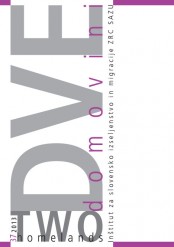Chen Shizeng’s “Theory of Subjectivity”: The Influence of Chinese Literati Painting on the Artistic Search for Western Modern-‘isms’ in the Republican Era
Keywords:
Chen Shizeng, subjectivity, literati painting, Western modern-‘isms’, Japanese influenceAbstract
The encounter, both direct and indirect, with the West at the turn of the 20th century led to a profound crisis in Chinese art. Many young artists went abroad to study Western art in order to reform traditional Chinese painting, which was often accused of being rigid, lacking perspective and creativity, and thus unsuited to portraying the contemporary world. It was during this period that the celebrated Beijing painter Chen Shizeng in a famous essay proposed a “theory of subjectivity” in defence of literati paint- ing. Taking that essay as a point of departure, and through the exploration of Western–Sino–Japanese interactions in artistic trends, the present paper seeks to explain why many Westernised Chinese artists identified with Western avant-garde movements instead of its academic tradition of realism. This phenomenon can also be understood as a positive reply to Chen’s theory of subjectivity, in which, based on its elements of self-expressionism and subjectivism, he compared literati painting with Western modern-‘isms’, finding more affinities than differences between them.
Downloads
References
Chen, Duxiu (1918). Meishu geming – Da Lü Cheng. Xin qingnian 6/1, 85–86.
Chen, Hengke (comp.) (1992). Zhongguo wenrenhua zhi yanjiu. Tianjin: Tianjin Guji Shudian.
Chen, Hengke (2008). Wenrenhua zhi jiazhi. Ershi shiji zhongguo hua taolun ji (Collection of Essays on 20th Century Chinese Painting) (eds. Shao Qi, Sun Haiyan). Shanghai: Shanghai shuhua chuban she, 22–25. Originally published in Huixue zazhi 2/1–6, 1921.
Croizier, Ralph C. (1988). Art and Revolution in Modern China. The Lingnan (Cantonese) School of Painting, 1906–1951. Berkely, Los Angeles, London: University of California Press.
Croizier, Ralph C. (1993). Post-Impressionists in Pre-War Shanghai: The Juelanshe (Storm Society) and the Fate of Modernism in Republican China. Modernity in Asian Art (ed. John Clark). New South Wales: Wild Peony, 135–154.
Fong, Wen C. (1993). The Modern Chinese Art Debate. Artibus Asiae 53, 1–2, 290–305.
Gao, Jianfu (1955). Wo de xiandai guohua guan. Hong Kong: Yuanquan chuban she.
Gao, Jianfu (2008). Wo de xiandai guohua guan. Ershi shiji zhongguo hua taolun ji (Collection of Essays on 20th Century Chinese Painting) (eds. Shao Qi, Sun Haiyan). Shanghai: Shanghai shuhua chuban she, 86–95.
Kao, Mayching (1972). China’s Response to the West in Art, 1898–1937. PhD diss. Stanford University.
Kao, Mayching (1983). The Beginning of the Western-style Painting Movement in Relationship to Reforms in Education in Early Twentieth-Century China. New Asia Academic Bulletin, IV, 373–400.
Lang, Shaojun (1997). Leixing yu xuepai – 20 shiji zhongguo hua lüe shuo. Ershi shiji zhongguo hua »chuantong de yanxu yu yanjin« guoji xueshu taolunhui lunwenji (ed. Cao Yiqiang). Hangzhou: Zhejiang renmin meishu chuban she, 12–39.
Li, Chu-Tsing (1979). Trends in Modern Chinese Painting: The C.A. Drenowatz Collection. Artibus Asiae, Supplementum 36.
Liu, Ruikuan (2002). Zhongguo meishu de xiandaihua: meishu qikan yu meizhan huodong de fenxi (1911– 1937). Modernization of Chinese Art: Analysis of Art Journals and Exhibitions (1911–1937). PhD diss., National Taiwan Normal University.
Nie, Chongzheng (1997). The Qing Dynasty (1644–191). Three Thousand Years of Chinese Painting. New Haven and London: Yale University Press. Beijing: Foreign Languages Press, 251–297.
Rošker, Jana (2009). Traditional Chinese Thought: Philosophy or Religion? Asian Philosophy 19/3, 225– 237.
Shen, Kuiyi (1997). On the Reform of Chinese Painting in Early Republican China. Ershi shiji zhongguo hua »chuantong de yanxu yu yanjin« guoji xueshu taolunhui lunwenji (Chinese Painting and the Twentieth Century: Creativity in the Aftermath of Tradition) (ed. Cao Yiqiang). Hangzhou: Zhejiang renmin meishu chuban she, 602–621.
Sullivan, Michael (1989). The Meeting of Eastern and Western Art. Berkeley, Los Angeles, London: University of California Press.
Sullivan, Michael (1996). Art and Artists of Twentieth-Century China. Berkeley, Los Angeles, London: University of California press.
Taki, Seiichi (1927). A Survey of Japanese Painting During the Meiji and Taisho Eras. Year Book of Japanese Art. English ed. Tokyo: National Committe of Japan on Intellectual Co-operation, 151–162.
Vampelj Suhadolnik, Nataša (2013). Reform of Chinese Painting in the Republican Era: Theory versus Practice. The Modernisation of Chinese Culture: Between Continuity and Change (eds. Jana Rošker, Nataša Vampelj Suhadolnik). Newcastle upon Tyne: Cambridge Scholars Publishing.
Wang, David Der-wei (2001). In the Name of the Real. Chinese Art: Modern Expressions (eds. Maxwell K. Hearn, Judith G. Smith). New York: Metropolitan Museum of Art, 28–59.
Wang, Yulu, Chen, Huijuan (eds.) (2006). Zhonghua minguo quanguo meishu zhanlanhui gailan. 1929– 2005. (An Overview of the National Art Exhibition of the Republic of China 1929–2005) 1. Taipei: Yishuguan.
Wong, Aida Yuen (2006). Parting the Mists: Discovering Japan and the Rise of National-Style Painting in Modern china. Honolulu: Association for Asian Studies and University of Hawaii Press.
Xu, Beihong (1929). Huo. Meizhan huikan 5, April 22, 1–2.
Downloads
Published
How to Cite
Issue
Section
License

This work is licensed under a Creative Commons Attribution-NonCommercial-NoDerivatives 4.0 International License.
Authors guarantee that the work is their own original creation and does not infringe any statutory or common-law copyright or any proprietary right of any third party. In case of claims by third parties, authors commit their self to defend the interests of the publisher, and shall cover any potential costs.
More in: Submission chapter





